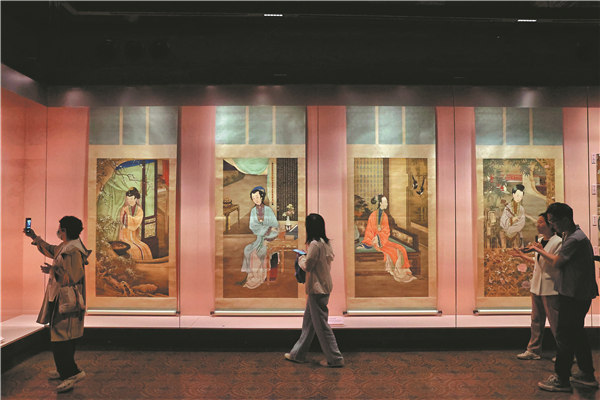

Exhibition of paintings of court women reveals changing attitudes toward gender and development, Wang Kaihao reports.
In the late Eastern Han Dynasty (24-220) period, Cai Wenji, a talented poet and musician, was captured by nomads during a war, and gave birth to two children far away from home.
Years later, when the woman finally got the chance to return home, she faced a tough choice, as the journey back meant saying farewell to her children. She shared this poignant experience through her art, becoming a symbol of resilience and the enduring power of culture.
Centuries earlier, when a Western Han Dynasty (206 BC-AD 24) emperor was frozen in his tracks by an approaching bear, his entourage was too frightened to attempt a rescue, apart from one person: Feng Jieyu, a heroic concubine, who stepped forward to protect him.
The actions of these women earned them honor, but they had to face dilemmas as well. Names of many other honorable and heroic women have also been remembered down the generations.
Images of these icons are now on display in a new exhibition by the Palace Museum in Beijing, Timeless Beauties: Figure Paintings from Across the Ages in the Palace Museum Collection.
Eighty-three pieces of art celebrating the spirit and beauty of Chinese women can be seen in the Wenhua Dian (Hall of Literary Brilliance) in the former imperial palace, which is also known as the Forbidden City. Thanks to vivid artistic portrayals, centuries after these women died, their legends continue to resonate and inspire.